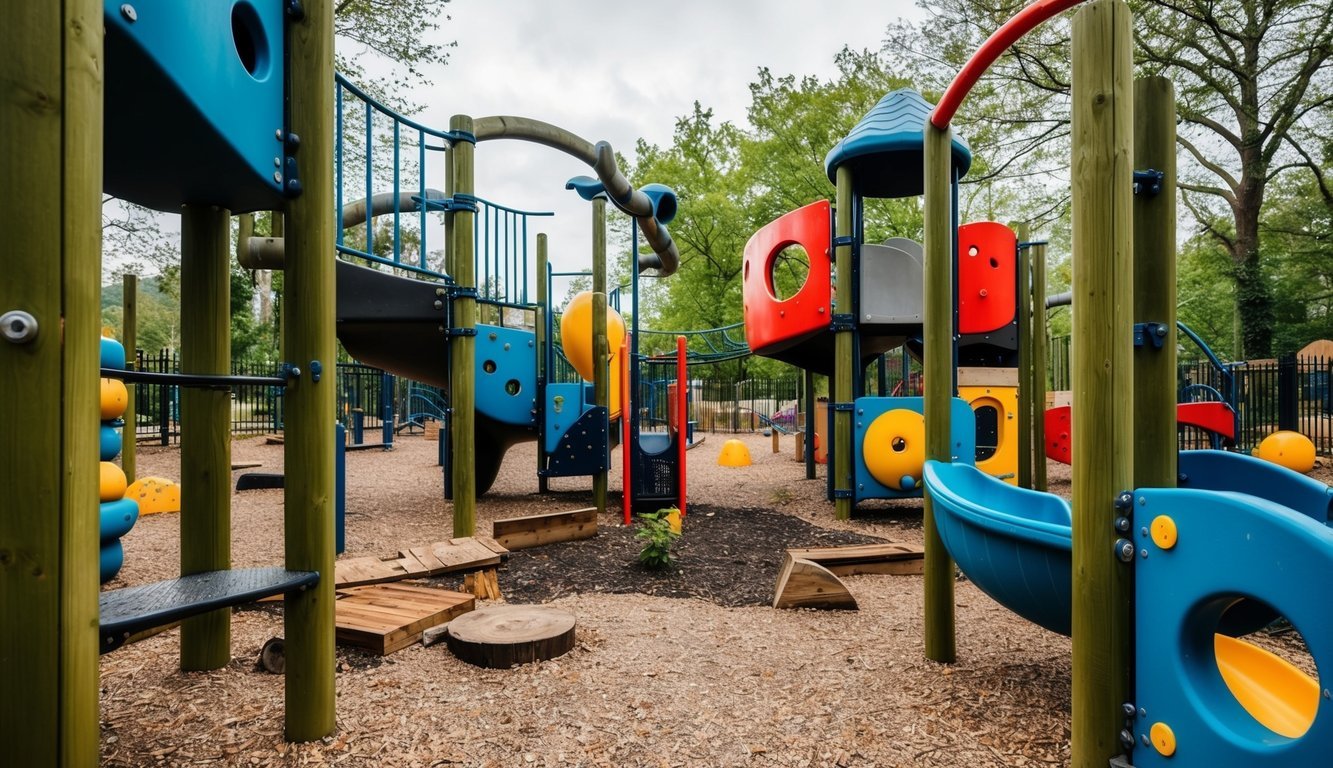
Recent research highlights the beneficial impact of risky play on children’s development. However, encouraging such activities can be challenging for parents. Alethea Jerebine, a researcher at Deakin University in Melbourne, found herself grappling with this issue while observing her daughters, aged 10 and 13, explore a rocky beach. Although she instinctively wanted to advise caution, she recognized the importance of risky play—activities that include elements of excitement, uncertainty, and perceived danger.
Understanding Risky Play
Over the last twenty years, studies have shown that risky play is crucial for promoting healthy physical, emotional, and cognitive growth in children. Opportunities to engage in these activities help develop essential skills like spatial awareness, coordination, and resilience. Unfortunately, misconceptions about risk and a decreased awareness of its benefits have led to increased restrictions on risky play globally.
Children often possess a better understanding of their abilities than many adults assume. Environments that foster risky play can offer significant advantages, although studying this type of play has historically been difficult due to its informal nature. To better appreciate and promote the benefits of risky play, researchers are using innovative methods such as virtual reality.
The Importance of Intentional Risk-Taking
Even those who advocate for safety recognize the value of intentional risk-taking. For example, Pamela Fuselli from Parachute, a non-profit organization in Toronto focused on injury prevention, points out that the developmental advantages of risky play—including social, physical, and mental growth—are substantial but frequently overlooked.
The investigation into risky play began in 1996 when Norway introduced playground safety regulations that required safety features to reduce the likelihood of accidents. Ellen Sandseter, a psychologist at Queen Maud University College, became concerned that these regulations resulted in the removal of stimulating equipment essential for risk-taking. Her research indicated that adolescents who lacked healthy thrill-seeking opportunities often engaged in negative risk-taking behaviors. Sandseter’s observational studies with young children led her to formulate a widely accepted definition of risky play, which includes activities characterized by excitement and uncertainty, often with perceived or actual risks of physical harm.
Encouraging Positive Risk-Taking
It is essential to differentiate between risk and danger; the latter includes situations that children cannot perceive or handle safely. For example, a child running barefoot on broken glass represents danger, while a child learning to climb a small height embodies risk appropriate for their developmental stage.
The goal of promoting risky play is not to transform cautious children into thrill-seekers but to empower all children to explore their limits at their own pace. Child psychologist Helen Dodd emphasizes that expressions of risky play will vary significantly among children, making opportunities for risk vital for everyone, regardless of personality traits.
Research reveals that engaging in risky play correlates with enhanced resilience, self-confidence, problem-solving abilities, and social skills such as cooperation and empathy. A study in Leuven, Belgium, found that children aged four to six who had two hours of risky play each week showed improved risk-assessment skills compared to peers without such opportunities.
Engaging in risky outdoor environments can also bring additional benefits, such as reduced stress and anxiety levels. Dodd theorizes that adventurous play teaches children to manage their physiological responses to excitement and anxiety. An observational study she conducted during the COVID-19 lockdown demonstrated that children who engaged more in adventurous play exhibited fewer signs of anxiety and depression, with effects particularly pronounced in children from lower-income backgrounds.
While the quality of research in risky play may vary, prominent figures in child development, such as Mariana Brussoni from the University of British Columbia, recognize the importance of these studies, even if they lack the rigor of randomized controlled trials. They still contribute significantly to our understanding of the topic.
Parents should not simply push their children to take risks, as this may not lead to meaningful learning experiences. Dodd recommends that adults allow children to lead their play, providing a supportive environment with minimal interference. This creates inherent challenges for empirical research on risky play, as the essence of play can be lost if directed by adults.
A common belief among proponents of risky play is that children should be as safe as necessary, rather than as safe as possible. Observing children’s facial expressions and body language can offer valuable insights into their engagement with risky play. Positive risky play often features children demonstrating determination and control, navigating challenges through trial and error. In such contexts, adults are encouraged to exercise restraint before intervening.
The physical characteristics of play environments significantly influence the encouragement of risky play. Research indicates that children playing on uneven surfaces or inclines are more likely to engage in positive risk-taking behaviors compared to those using flat surfaces.
To further investigate risky play, Brussoni and her colleagues created a virtual environment to assess children’s risk-management skills without exposing them to real hazards. In a controlled setting, children aged seven to ten used eye-tracking virtual-reality headsets and motion sensors to navigate scenarios like street-crossing and balancing on playground equipment.
This innovative approach aims to showcase the skills children develop through risky play, which may transfer to real-life situations. While exploring children’s risk-management abilities is ethically sensitive, it remains a vital area of research to support their developmental needs.
In summary, fostering opportunities for children to engage in risky play is vital for their overall development. While prioritizing safety, parents and guardians are encouraged to nurture their children’s independence and confidence, ultimately aiding their growth through thoughtfully managed opportunities for risk-taking.
Study Details:
- Title: Pers. Individ. Differ.
- Authors: Hansen, E. B. & Breivik, G.
- Publication Date: 2001
- DOI: 10.1016/S0191-8869(00)90061-1
- Title: Eur. Early Child. Educ. Res. J.
- Authors: Lavrysen, A. et al.
- Publication Date: 2015
- DOI: 10.1080/1350293X.2015.1102412
- Title: Child Psychiatry Hum. Dev.
- Authors: Dodd, H. F., Nesbit, R. J. & FitzGibbon, L.
- Publication Date: 2023
- DOI: 10.1007/s10578-022-01363-2
- Title: J. Outdoor Environ. Educ.
- Authors: Loebach, J., Ramsden, R., Cox, A., Joyce, K. & Brussoni, M.
- Publication Date: 2023
- DOI: 10.1007/s42322-023-00145-1

